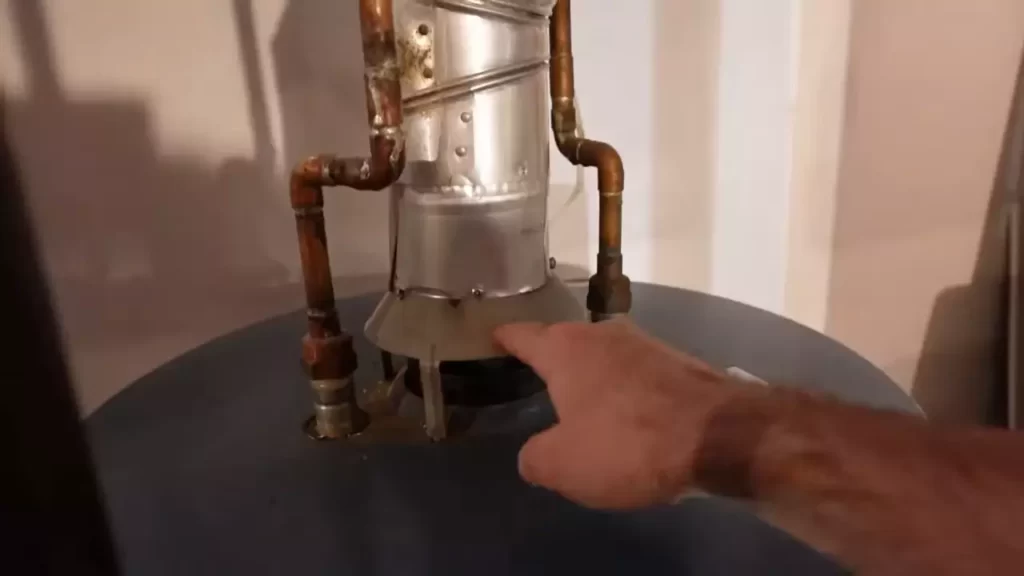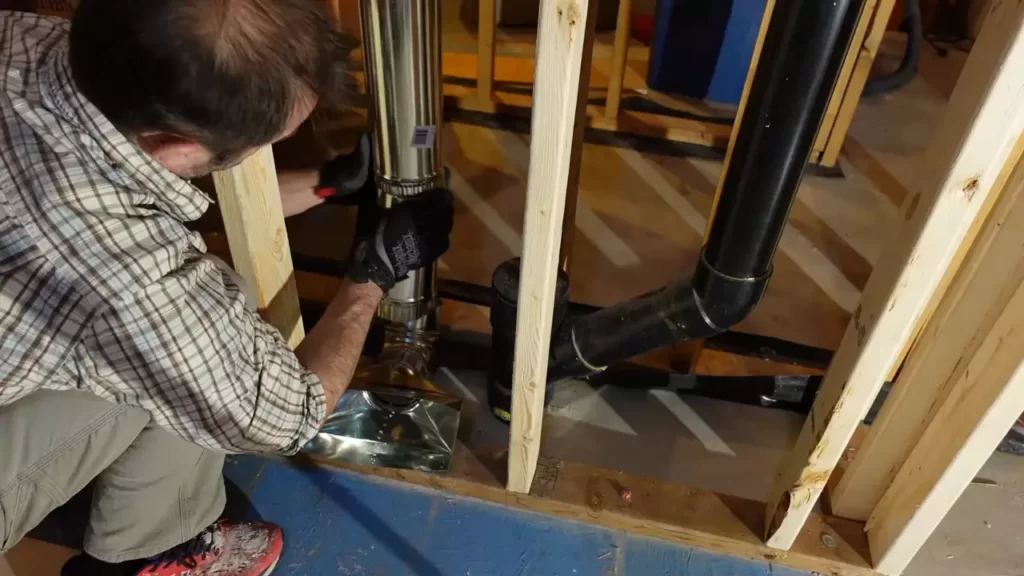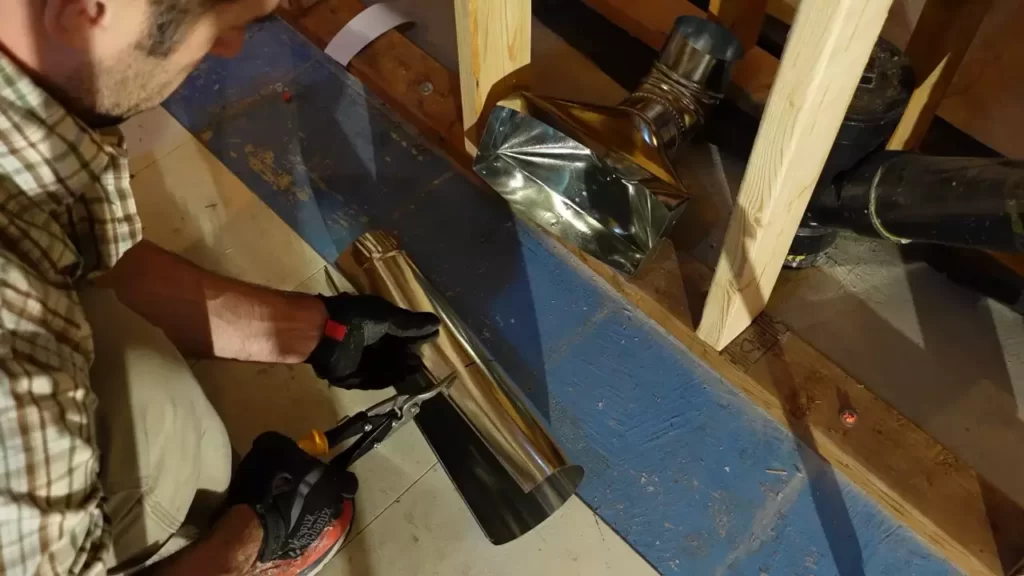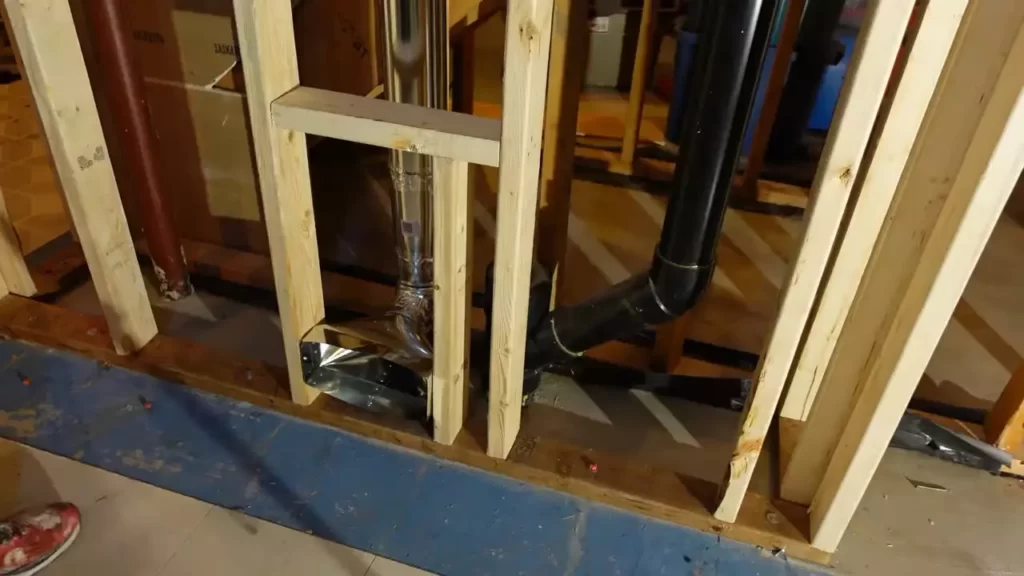To install a cold air return, follow these steps:
- Determine the ideal location for the return based on the size of your space.
- Use a stud finder to locate the wall studs and mark them. Next, cut a hole in the wall for the return duct.
- Install the return box securely in the wall and seal any gaps with caulk or tape.
- Connect the return duct to the box and secure it with screws. Finally, attach a grille or register to complete the installation.
Are you interested in improving your home’s ventilation system? Installing a cold air return is a crucial step. Not only does it help circulate air efficiently, but it also maintains a comfortable indoor environment. We will guide you through the process of installing a cold air return. By following these simple steps, you can ensure proper air circulation and enjoy a cozy living space. So, let’s delve into the details and get started on enhancing the ventilation in your home.
Determining The Ideal Location
When it comes to installing a cold air return, determining the ideal location is crucial for ensuring optimal airflow and efficiency. The placement of the cold air return can greatly impact the overall performance of your HVAC system. In this article, we will discuss the key factors to consider when choosing a location for your cold air return, as well as how to measure the size and assess accessibility and convenience.

Factors to consider when choosing a location
When selecting the ideal location for your cold air return, there are several factors to take into account. Consider the following:
- Avoiding obstructions: Ensure that the location is free from any obstructions such as furniture, curtains, or walls, which can impede the flow of air.
- Proximity to heat sources: Avoid placing the cold air return near heat-generating appliances or heat sources, as this can negatively impact its efficiency.
- Return air path: Make sure that the location allows for a clear return air path, allowing air to easily flow back to the HVAC system.
- Room size: Consider the size of the room and the amount of air circulation needed to effectively heat or cool the space.
- Noise concerns: If noise is a concern, select a location that is away from busy areas or rooms where silence is desirable.
Measuring the size of the cold air return
It is important to measure the size of the cold air return to ensure proper functionality. Follow these steps:
- Calculate the cubic footage: Measure the length, width, and height of the room where the cold air return will be installed. Multiply these measurements together to calculate the cubic footage.
- Determine the required airflow: Consult the HVAC system specifications or seek professional advice to determine the recommended airflow for your specific setup.
- Select the appropriate size: Based on the calculated cubic footage and required airflow, choose a cold air return that matches these specifications.
Assessing accessibility and convenience
In addition to the location and size, it is essential to assess the accessibility and convenience of the chosen spot:
| Accessibility | Convenience |
|---|---|
| Easy maintenance: Ensure that the cold air return is easily accessible for regular cleaning and filter replacement. | Avoidance of high-traffic areas: Opt for a location that is not obstructed by furniture or in the way of foot traffic to prevent accidental damage. |
| Proximity to the HVAC system: Select a location that allows for a practical and efficient connection to the HVAC system. | Minimal disruption: Consider the impact on the aesthetics and functionality of the room, striving for a balance of both. |
By taking these factors into consideration when determining the ideal location for your cold air return, you can ensure optimal airflow, energy efficiency, and overall performance of your HVAC system.
Gathering The Necessary Tools And Materials
Before you begin your cold air return installation project, it’s important to gather all the necessary tools and materials to ensure a smooth and efficient process. By being prepared and having everything you need on hand, you can save yourself time and frustration. In this section, we will go over the list of tools required, the materials needed, and the safety equipment and precautions to take during the installation process.
List of tools required for the installation
To successfully install a cold air return, you will need the following tools:
| Tools |
|---|
| Screwdriver (flathead or Phillips) |
| Tape measure |
| Level |
| Drill |
| Hole saw |
| Sheet metal snips |
| Pencil or marker |
| Safety goggles |
| Work gloves |

Materials needed for the project
In addition to the tools listed above, you will also need the following materials for the installation:
- Cold air return grille
- Flexible ductwork
- Duct tape
- Screws
- Wire or cable
- Mounting brackets
Safety equipment and precautions
Safety should always be a top priority when working on any home improvement project. When installing a cold air return, it is important to take the following precautions:
- Wear safety goggles to protect your eyes from debris and particles.
- Use work gloves to protect your hands while handling sharp tools and materials.
- Ensure the area is well-ventilated to avoid any potential health risks.
- Follow manufacturer’s instructions and recommended safety guidelines for all tools and materials used.
By taking these safety measures and having the necessary tools and materials at hand, you can confidently proceed with the installation of your cold air return. In the next section, we will walk you through the step-by-step process of installing the cold air return in your home.
Step-By-Step Installation Process
Installing a cold air return in your home is an important step towards ensuring proper airflow and temperature regulation. By following this step-by-step installation process, you can easily install a cold air return and enhance the overall efficiency of your HVAC system.
Preparing the area for installation
The first step in the installation process is preparing the area where the cold air return will be installed. Make sure to choose a location in a central area of your home that allows for optimal airflow. Clear any obstacles or furniture in the vicinity to ensure unobstructed access.
Cutting an opening in the wall or floor
With the area prepared, it’s time to cut an opening in either the wall or the floor, depending on your HVAC system’s design. Measure the dimensions of the desired opening carefully and use a jigsaw or reciprocating saw to make the cut. Be sure to wear protective eyewear and take necessary safety precautions while cutting.
Attaching the cold air return grille
Once the opening is cut, it’s time to attach the cold air return grille. Carefully position the grille over the opening, ensuring a proper fit. Secure the grille in place using screws or nails, making sure it is firmly attached and level with the surrounding surface.
Connecting the ductwork
Next, it’s time to connect the ductwork to the cold air return. Measure the distance between the opening and the existing ductwork, and cut a section of ductwork accordingly. Attach the ductwork to the cold air return and the main duct using foil tape or sheet metal screws. Ensure a tight and secure connection to prevent air leakage.
Securing the return vent
To complete the installation process, secure the return vent cover over the grille. To ensure a proper fit, measure the dimensions of the grille and choose a vent cover that matches these measurements. Attach the vent cover using screws or other suitable fasteners, ensuring it is securely in place.
Insulating and sealing the installation
Lastly, it’s essential to insulate and seal the installation to maximize energy efficiency. Use insulating foam or weatherstripping to seal any gaps or cracks around the edges of the opening, ensuring a tight seal. This will prevent air leakage and potential energy wastage.
By following these simple steps, you can successfully install a cold air return in your home. Proper installation of a cold air return not only improves the overall performance of your HVAC system but also enhances the comfort and energy efficiency of your living space. Take the time to ensure each step is completed accurately, and you’ll enjoy the benefits of a well-functioning cold air return for years to come.

Tips For Troubleshooting And Maintenance
Regular troubleshooting and maintenance are essential for keeping your cold air return functioning optimally. By addressing common problems promptly and performing routine maintenance tasks, you can ensure that your cold air return operates efficiently, maintaining a comfortable and healthy indoor environment. In this section, we will outline common installation problems, provide tips on how to resolve them, discuss regular maintenance to keep your cold air return in top condition, and highlight signs that indicate the need for professional assistance.
Common problems during installation and how to resolve them
During the installation process, several issues may arise that can impede the proper functioning of your cold air return. Identifying these problems early on and taking the necessary steps to resolve them will help ensure a successful installation. Here are some common problems that may occur and how to address them:
1. Improper sizing
One of the most common issues during cold air return installation is improper sizing. If the return register is too small or too large for the opening, it can negatively affect the airflow and efficiency of the system. To resolve this, carefully measure the opening and select a properly sized return register. If needed, consult a professional for guidance on sizing.
2. Blocked or restricted airflow
Blocked or restricted airflow can occur if there are obstructions in the cold air return pathway, such as furniture, curtains, or debris. This can reduce the effectiveness of the system and strain the HVAC equipment. To resolve this, ensure that there are no obstructions blocking the airflow and regularly clean the cold air return vents to remove any accumulated dust or debris.
3. Air leaks
Air leaks around the cold air return ducts can lead to wasted energy and reduced efficiency. Inspect the ductwork for any leaks or gaps and seal them using appropriate methods, such as duct tape or mastic sealant. Properly sealing the ductwork will ensure that the cold air return system operates at its maximum potential.
Regular maintenance to keep the cold air return functioning optimally
To maintain the optimal performance of your cold air return system, regular maintenance is crucial. Here are some maintenance tasks you should perform on a regular basis:
- Clean or replace air filters: Dirty or clogged air filters can hinder airflow and reduce the efficiency of the system. Clean or replace the filters regularly to ensure proper airflow and maintain good indoor air quality.
- Clean cold air return vents: Dust and debris can accumulate on the cold air return vents over time, obstructing airflow. Regularly clean the vents using a soft brush or vacuum cleaner to remove any build-up.
- Inspect and clean ductwork: Periodically inspect the cold air return ducts for any signs of damage or blockage. If necessary, clean the ducts to remove any dirt or debris that may hinder airflow.
- Check for unusual noises or odors: Unusual noises or odors coming from the cold air return system may indicate a problem. If you notice any strange sounds or smells, investigate further or seek professional assistance.
Signs that indicate the need for professional assistance
While regular maintenance can help prevent many problems, some issues may require professional assistance to resolve. Here are some signs that indicate you may need to call in a professional:
- Low or no airflow from the cold air return vents
- Inconsistent temperature control throughout the house
- Frequent system cycling or short-cycling
- Excessive noise or vibration from the system
- Unpleasant odors coming from the vents
If you experience any of these issues, it is advisable to contact a qualified HVAC technician to diagnose and address the problem effectively.
By troubleshooting common installation problems, performing regular maintenance tasks, and seeking professional assistance when needed, you can ensure that your cold air return operates efficiently, providing optimal airflow and maintaining a comfortable indoor environment.

Safety Considerations And Best Practices
When it comes to installing a cold air return, safety should be the top priority. Taking the necessary precautions and following best practices ensures a smooth and secure installation process. This section will cover safety considerations and best practices to adhere to while installing a cold air return in your home.
Safety Precautions to Follow During Installation
To prevent any accidents or injuries during the installation process, there are several safety precautions that you should follow:
- Wear appropriate protective gear, such as safety goggles and gloves, to protect yourself from any potential hazards.
- Ensure the area where you will be working is well-lit and clear of any clutter or obstructions.
- Turn off the power to the HVAC system before you begin the installation to avoid any electrical shocks.
- If you are working with sharp tools or equipment, such as tin snips or a jigsaw, make sure to handle them carefully and store them safely when not in use.
- Be cautious when climbing ladders or using scaffolding to access higher areas, ensuring they are stable and secure before use.
- Keep children and pets away from the installation area to prevent any accidents or disturbances.
- If you are unsure about any aspect of the installation process, consult a professional to ensure the job is done safely.
Ensuring Proper Air Circulation and Ventilation
Proper air circulation and ventilation are crucial for the efficient functioning of a cold air return. Consider the following points to ensure optimal airflow:
- Place the cold air return in a central location, away from any obstructions or furniture that could impede the airflow.
- Ensure that the cold air return is properly sealed to prevent any air leaks that could reduce efficiency.
- Regularly clean and maintain the cold air return to prevent the accumulation of dust or debris that could hinder airflow.
- Consider installing multiple cold air returns in larger spaces to evenly distribute the air and maintain consistent temperatures.
Compliance with Local Building Codes and Regulations
Before installing a cold air return, it is essential to familiarize yourself with the local building codes and regulations in your area. Compliance ensures that the installation meets safety standards and legal requirements. Consider the following points:
| Best Practices for Compliance | Importance |
|---|---|
| Obtain the necessary permits before starting the installation process. | To avoid penalties or legal issues. |
| Follow the prescribed guidelines and specifications for cold air returns outlined in the local building codes. | To ensure the installation meets safety standards. |
| Consult with a professional or inspector to verify compliance with the regulations. | To ensure the installation is done correctly and any required inspections are conducted. |
By adhering to safety precautions, ensuring proper air circulation, and complying with local building codes and regulations, you can ensure a safe and effective installation of a cold air return.

Additional Considerations For Specific Areas
When installing a cold air return system, it’s essential to consider the specific requirements of different areas within your home. The placement and design of cold air returns can vary depending on factors such as the room’s function, ceiling height, and location within a multi-level home. By understanding these additional considerations, you can ensure proper airflow and keep your home comfortable. In this section, we will discuss the installation of cold air returns in three specific areas: the basement, high-ceiling rooms, and multi-level homes.
Installing a Cold Air Return in a Basement
If you have a basement, it’s important to pay special attention to the installation of your cold air return system. Basements tend to be cooler and more prone to moisture, making proper ventilation crucial. To install a cold air return in your basement, follow these steps:
- Identify a suitable location for your cold air return. It should be placed near the floor, as cold air naturally settles downwards.
- Ensure the location is clear of any obstructions such as furniture or appliances.
- Use a stud finder to locate wall studs, as they will provide stability for mounting your cold air return vent.
- Mark the location of the vent and use a drywall saw to cut an opening that matches the size of the vent.
- Securely attach the vent to the wall using screws or nails, making sure it is flush with the surrounding surface.
- Connect the cold air return ductwork to the vent, ensuring a tight seal to prevent air leakage.
- Test the system for proper airflow and make any necessary adjustments.
Cold Air Return Installation in a High-Ceiling Room
High-ceiling rooms present a unique challenge when it comes to cold air return installation. These rooms tend to have a larger volume of air, requiring more efficient airflow to maintain comfortable temperatures. To install a cold air return in a high-ceiling room, consider the following:
- Place the cold air return near the top of the room, as warm air naturally rises.
- Take advantage of overhead space by using air ducts or drop ceilings to direct air towards the cold air return.
- Ensure the cold air return is large enough to accommodate the increased airflow needs of a high-ceiling room.
- Consider incorporating a fan or other circulation device to enhance airflow and improve temperature distribution.
Cold Air Return Options for Multi-Level Homes
In multi-level homes, it’s essential to distribute airflow evenly across different floors. Here are some options to consider when installing cold air returns in multi-level homes:
| Option | Description |
|---|---|
| Zone control | Create separate zones within your home, each with its own dedicated cold air return system. This allows for individual temperature control and improved energy efficiency. |
| Balance dampers | Install balance dampers in the ductwork to regulate airflow between different floors. This helps ensure that each level receives an adequate supply of conditioned air. |
| Dedicated returns | Add dedicated cold air returns on each level of your home to promote efficient airflow and eliminate temperature imbalances. |
By considering these additional factors, you can optimize the installation of cold air returns in specific areas of your home. This will help you achieve optimal comfort, energy efficiency, and airflow throughout your living space.
Frequently Asked Questions Of How To Install Cold Air Return
Where Do You Put Cold Air Return?
The cold air return should be placed in a central location, such as a hallway or near the main living area. It is important to avoid placing it near potential sources of pollution or moisture, such as bathrooms or kitchens.
The placement should allow for proper air circulation throughout the house.
Should Cold Air Return Be High Or Low?
Cold air returns should be located low on the wall or floor to effectively circulate cold air and prevent stagnation. This helps maintain a balanced air pressure and improve the overall efficiency of the HVAC system. Placing them high can cause poor air distribution and discomfort in the room.
Do You Need Cold Air Return In Every Room?
Yes, it is important to have a cold air return in every room. A cold air return helps improve air circulation and maintain consistent temperature throughout your home. It allows for efficient operation of your heating and cooling system, ensuring comfort and energy efficiency.
Can I Add A Return Vent To Existing Ductwork?
Yes, you can add a return vent to existing ductwork. It is a straightforward process that involves connecting a new vent to the existing ducts. This allows for better airflow and improved air circulation in your home or building.
Conclusion
Installing a cold air return is an essential step in optimizing the airflow and comfort of your home. By following these step-by-step instructions, you can easily complete this task on your own, saving both time and money. Remember to prioritize safety and consult professionals if needed.
With a properly installed cold air return, you can enjoy improved air quality and energy efficiency in your living space. So don’t hesitate, get started today!
